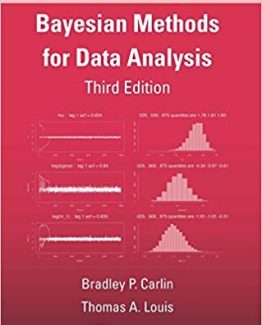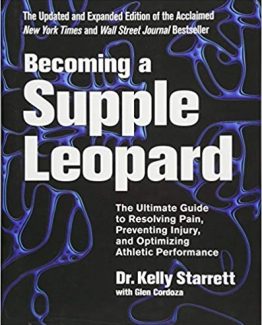Engineering Mechanics: Statics 9th Edition by James L. Meriam, ISBN-13: 978-1119723516
[PDF eBook eTextbook] – Available Instantly
- Publisher: Wiley; 9th edition (July 15, 2020)
- Language: English
- 448 pages
- ISBN-10: 1119723515
- ISBN-13: 978-1119723516
Engineering Mechanics: Statics provides students with a solid foundation of mechanics principles. This product helps students develop their problem-solving skills with an extensive variety of engaging problems related to engineering design. To help students build necessary visualization and problem–solving skills, a strong emphasis is placed on drawing free–body diagrams, the most important skill needed to solve mechanics problems.
The 9th edition of this classic text continues to provide the same high quality material seen in previous editions. The text is extensively rewritten with updated prose for content clarity, superb new problems in new application areas, outstanding instruction on drawing free body diagrams and new electronic supplements to assist readers. Furthermore, this edition offers more Web-based problem solving to practice solving problems, with immediate feedback; computational mechanics booklets offer flexibility in introducing Matlab, Mathcad, and/or Maple into your mechanics classroom; electronic figures from the text to enhance lectures by pulling material from the text into PowerPoint or other lecture formats; 100+ additional electronic transparencies offer problem statements and fully worked solutions for use in lecture or as outside study tools.
Table of Contents:
1 Introduction to Statics 1
1/1 Mechanics 1
1/2 Basic Concepts 2
1/3 Scalars and Vectors 2
1/4 Newton’s Laws 5
1/5 Units 6
1/6 Law of Gravitation 9
1/7 Accuracy, Limits, and Approximations 10
1/8 Problem Solving in Statics 11
1/9 Chapter Review 14
2 Force Systems 17
2/1 Introduction 17
2/2 Force 17
Section A Two-Dimensional Force Systems 20
2/3 Rectangular Components 20
2/4 Moment 26
2/5 Couple 31
2/6 Resultants 34
Section B Three-Dimensional Force Systems 37
2/7 Rectangular Components 37
2/8 Moment and Couple 41
2/9 Resultants 48
2/10 Chapter Review 54
3 Equilibrium 55
3/1 Introduction 55
Section A Equilibrium in Two Dimensions 56
3/2 System Isolation and the Free-Body
Diagram 56
3/3 Equilibrium Conditions 66
Section B Equilibrium in Three Dimensions 74
3/4 Equilibrium Conditions 74
3/5 Chapter Review 82
4 Structures 83
4/1 Introduction 83
4/2 Plane Trusses 84
4/3 Method of Joints 86
4/4 Method of Sections 92
4/5 Space Trusses 96
4/6 Frames and Machines 99
4/7 Chapter Review 105
5 Distributed Forces 106
5/1 Introduction 106
Section A Centers of Mass and Centroids 108
5/2 Center of Mass 108
5/3 Centroids of Lines, Areas, and Volumes 110
5/4 Composite Bodies and Figures;
Approximations 118
5/5 Theorems of Pappus 122
Section B Special Topics 125
5/6 Beams—External Eff ects 125
5/7 Beams—Internal Eff ects 128
5/8 Flexible Cables 135
5/9 Fluid Statics 143
5/10 Chapter Review 153
6 Friction 154
6/1 Introduction 154
Section A Frictional Phenomena 155
6/2 Types of Friction 155
6/3 Dry Friction 155
Section B Applications of Friction in Machines 164
6/4 Wedges 164
6/5 Screws 165
6/6 Journal Bearings 169
6/7 Thrust Bearings; Disk Friction 169
6/8 Flexible Belts 172
6/9 Rolling Resistance 173
6/10 Chapter Review 176
7 Virtual Work 177
7/1 Introduction 177
7/2 Work 177
7/3 Equilibrium 180
7/4 Potential Energy and Stability 188
7/5 Chapter Review 197
APPENDIX A Area Moments of Inertia 198
A/1 Introduction 198
A/2 Definitions 199
A/3 Composite Areas 206
A/4 Products of Inertia and Rotation of Axes 209
APPENDIX B Mass Moments of Inertia 214
APPENDIX C Selected Topics of Mathematics 215
C/1 Introduction 215
C/2 Plane Geometry 215
C/3 Solid Geometry 216
C/4 Algebra 216
C/5 Analytic Geometry 217
C/6 Trigonometry 217
C/7 Vector Operations 218
C/8 Series 221
C/9 Derivatives 221
C/10 Integrals 222
C/11 Newton’s Method for Solving Intractable
Equations 225
C/12 Selected Techniques for Numerical
Integration 227
APPENDIX D Useful Tables 230
Table D/1 Physical Properties 230
Table D/2 Solar System Constants 231
Table D/3 Properties of Plane Figures 232
Table D/4 Properties of Homogeneous Solids 234
Table D/5 Conversion Factors; SI Units 238
PROBLEMS P-1
INDEX I-1
PROBLEM ANSWERS PA-1
Dr. James L. Meriam has contributed to the field of engineering mechanics as one of the premier engineering educators during the second half of the twentieth century. Dr. Meriam earned his B.E., M. Eng., and Ph.D. degrees from Yale University. He had early industrial experience with Pratt and Whitney Aircraft and the General Electric Company. During the Second World War, he served in the U.S. Coast Guard. He was a member of the faculty of the University of California-Berkeley, Dean of Engineering at Duke University, a faculty member at the California Polytechnic State University, and visiting professor at the University of California-Santa Barbara. He retired in 1990. Professor Meriam always placed great emphasis on teaching, and this trait was recognized by his students wherever he taught. At Berkeley in 1963, he was the first recipient of the Outstanding Faculty Award of Tau Beta Pi, given primarily for excellence in teaching. In 1978, he received the Distinguished Educator Award for Outstanding Service to Engineering Mechanics Education from the American Society for Engineering Education, and in 1992 was the Society’s recipient of the Benjamin Garver Lamme Award, which is ASEE’s highest annual national award.
Dr. L. G. Kraige, coauthor of the Engineering Mechanics series since the early 1980s, has also made significant contributions to mechanics education. Dr. Kraige earned his B.S., M.S., and Ph.D. degrees at the University of Virginia, principally in aerospace engineering, and he currently serves as Professor of Engineering Science and Mechanics at Virginia Polytechnic Institute and State University. In addition to his widely recognized research and publications in the field of spacecraft dynamics. Professor Kraige has devoted his attention to the teaching of mechanics at both introductory and advanced levels. His outstanding teaching has been widely recognized and has earned him teaching awards at the departmental, college, university, state, regional, and national levels. These include the Francis J. Maher Award for excellence in education in the Department of Engineering Science and Mechanics, the Wine Award for excellence in university teaching, and the Outstanding Educator Award from the State Council of Higher Education for the Commonwealth of Virginia. In 1996, the Mechanics Division of ASEE bestowed upon him the Archie Higdon Distinguished Educator Award. The Carnegie Foundation for the Advancement of Teaching and the Council for Advancement and Support of Education awarded him the distinction of Virginia Professor of the Year for 1997. During 2004, he held the W. S. “Pete” White Chair for Innovation in Engineering Education, and in 2006 he teamed with Professors Scott L. Hendricks and Don H. Morris as recipients of the XCaliber Award for Teaching with Technology. In his teaching, Professor Kraige stresses the development of analytical capabilities along with the strengthening of physical insight and engineering judgment. Since the early 1980s, he has worked on personal-computer software designed to enhance the teaching/learning process in statics, dynamics, strength of materials, and higher level areas of dynamics and vibrations.
Jeffrey N. Bolton, Associate Professor of Mechanical Engineering Technology and Director of Digital Learning at Bluefield State College. Dr. Bolton earned his B.S., M.S., and Ph.D. in Engineering Mechanics from Virginia Polytechnic Institute and State University. His research interests include automatic balancing of six-degree-of-freedom elastically-mounted rotors. He has a wealth of teaching experience, including at Virginia Tech, where he was the 2010 recipient of the Sporn Teaching Award for Engineering Subjects, which is primarily chosen by students. In 2014, Professor Bolton received the Outstanding Faculty Award from Bluefield State College. Professor Bolton was selected as the 2016 West Virginia Professor of the Year by the Faculty Merit Foundation. He has the unusual ability to set high levels of rigor and achievement in the classroom while establishing a high degree of rapport with his students. In addition to maintaining time-tested traditions for future generations of students, Dr. Bolton brings effective application of technology to this textbook series.
What makes us different?
• Instant Download
• Always Competitive Pricing
• 100% Privacy
• FREE Sample Available
• 24-7 LIVE Customer Support






Reviews
There are no reviews yet.